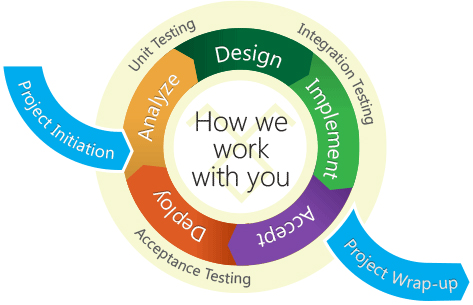Why do software projects fail? And how can Agile help
WHY SOFTWARE PROJECTS FAIL?
According to Standish Group survey (Aug 2013), Only 16% of the software projects were completed on-time and on-budget with all the features and functions specified. Inability to adopt changes in a fast paced and complex project is the most prevalent reason for the failures.
Pitfalls with traditional approach
- Difficult to measure progress within stages.
- Cannot accommodate changing requirements.
- No working software is produced until late in the life cycle.
Top reasons for failure
- Changing requirements
- Lack of stakeholders engagement
- Poor requirements analysis
- Poor cost and schedule estimations
Traditional development starts off with an assumption that user, functional and system requirements are fully known and documented in a way that enables efficient development. This is almost never true. And hence, changing requirements keep the risk high. Poor communication within team members, clients, and managers create a high risk of failure.
HOW CAN AGILE PROCESS HELP?
The agile development incorporates change & collaboration in the very nature of development process, hence eliminating the problems associated with changing requirements. The project is divided in iterations and each iteration output is a working functional entity, which enables users to touch and feel the product as it is being developed and project for immediate feedback.
All the stakeholders stay involved in all the phases of the project thus achieving a very high level of collaboration and ownership.
Project backlogs are maintained based on priority to ensure most important features are built first keeping time schedule and budget in check.

Benefits
- Visible progress at the end of each iteration.
- Change request are easily accommodated in each iteration.
- Functional product at the end of each iteration with complete functionality.
- Uncertainty reduced with each iteration.
Advantages of Agile Development
Revenue: The iterative nature of agile development means features are delivered incrementally, enabling early benefits.
Quality: Testing is integrated throughout the lifecycle, enabling regular inspection of the working product as it develops
Cost Control: The approach of fixed timescales and evolving requirements enables a fixed budget, hence the product and its features are variable, rather than the cost.
PegasusOne.com, How can we help?
We are based in Brea, growCA and we help businesses develop software solutions and provide vision to produce measurable value addition and competitive advantage. Our clients are small and medium size businesses which need a partner to help them solve challenges related to the development and continuously improving their software solutions growing the business. Our company is in a unique position to help our clients because we have figured out how to develop quality solutions in most efficient way to maximize the return on investment, eliminate waste, and reduce time to market using are lean and agile processes.
Our lean startup process ensures upto 43% less time to market & 73% reduction in rework and defects












